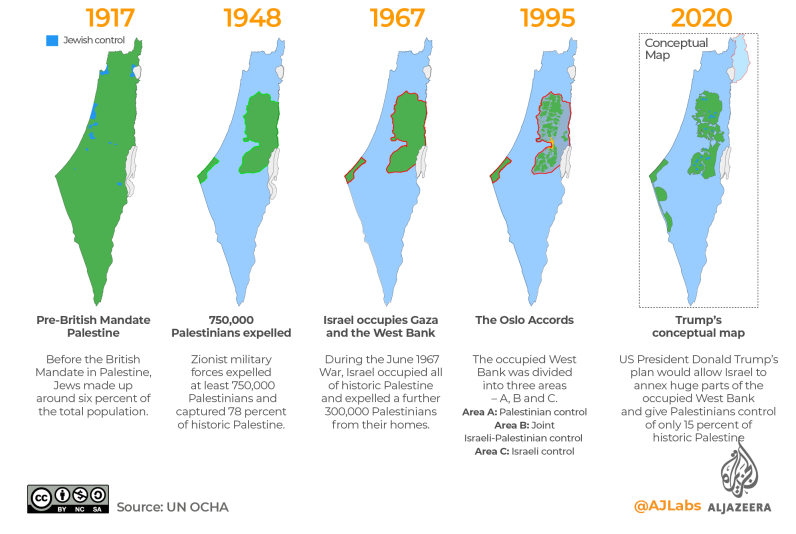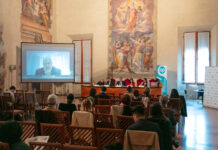The never-ending war between Israel and Palestine has reached a historic turning point with the Hamas-led Al-Aqsa Flood operation. The attack, which began in Gaza on Saturday 7 October, was aimed at freeing political prisoners held in Israeli jails in protest at Israel’s violation of Muslim holy sites and settler attacks on Palestinian civilians. The Ezzedine al-Qassam Brigades, the armed wing of the Hamas party, launched an operation that surprised the Israeli defence forces, most analysts and the Palestinians themselves, attacking Israeli territory by land, sea and air with an unprecedented launch of long-range rockets. The Israeli government responded by announcing Operation Steel Swords, with Prime Minister Benjamin Netanyahu warning that Gaza would become a ‘desert island’.
This umpteenth act of violence is part of an escalation that has reached very high levels in recent years. Since 2008, 6407 Palestinians have been killed by Israeli soldiers. In the same period, 308 Israelis have been killed. Since February 2022, Israeli forces have killed nearly 220 Palestinians, including 35 in January 2023 alone.
On the cover photo, Anas-Mohammed/Shutterstock.com. Below is a map produced by Al Jazeera showing the Israeli advance in occupying the Palestinian Territories


Hamas: aims and allies
Hamas is the political movement that has controlled the Gaza Strip since 2006. The Sunni fundamentalist Islamist party has an armed wing, the al-Qassam Brigades. Hamas stands for Harakat al-Muqawama al-Islamiyya, which means Islamic Resistance Movement. Founded in 1987 during the first Palestinian intifada by Sheikh Ahmed Yassin (killed in an Israeli air strike in 2004), it began its activities as the Palestinian branch of the Muslim Brotherhood.
Its founding charter set out a number of principles, including the conquest of all of Palestine and the destruction of Israel. Amended in 2017, it states that it accepts the 1967 borders as the basis for a Palestinian state with Jerusalem as its capital and the return of refugees to their homes. Hamas has not radically changed its aims over the years: it does not recognise the legitimacy of the State of Israel and has chosen armed resistance as its method of liberating the territories. In 2006, Hamas won the elections for the Palestinian Legislative Council (the Palestinian parliament). Clashes between Fatah and Hamas led to the Gaza civil war in 2007, culminating in a de facto split in the Palestinian government: Hamas in the Strip and Fatah in the West Bank. Hamas is actually one of the two main Palestinian political parties.
It is opposed to Fatah and is considered a terrorist organisation by Israel, the United States, the European Union, Canada, Egypt and Japan. In Gaza, Hamas applies many principles of Islamic law. It is part of an alliance that includes Iran, Syria and the Shia Islamic group Hezbollah in Lebanon. It is based in Gaza but has supporters in the Palestinian territories and leaders scattered throughout the region.
The Gaza exclave
The Gaza Strip is a small autonomous Palestinian territory that, along with the West Bank and East Jerusalem, came under Israeli occupation after the 1967 Arab-Israeli war. At the end of 2022, the population of the Gaza Strip was 2,375,259. Girls and boys make up 47 per cent of Gaza’s two million inhabitants. It is one of the most densely populated places in the world.
Bordering Israel and Egypt on the Mediterranean coast, the Gaza Strip covers an area of about 365 sq km. In Ottoman times, the area was part of Greater Syria, a region that included Palestine up to the Jordan River, Syria and most of Lebanon. It was occupied by Egypt during the first Arab-Israeli war. In the 1956 war it was occupied by the Israelis along with Sinai, but returned to Egypt thanks to UN and US intervention. It was occupied again by Israel in the 1967 Six Day War. In 2012, the UN recognised the Strip as part of the state of Palestine.
The Israeli blockade of Gaza, in its current form, has been in place since June 2007, when Israel imposed a land, sea and air blockade on the territory. Israel controls Gaza’s airspace and territorial waters, as well as two of its three border crossings; the third is controlled by Egypt. The movement of people in and out of Gaza is through the Beit Hanoun crossing (known to Israelis as Erez) with Israel and the Rafah crossing with Egypt. Both Israel and Egypt have kept their borders largely closed over the years. Israel only allows passage through the Beit Hanoun crossing in ‘exceptional humanitarian cases, with particular attention to urgent medical cases’. Only 60% of requests for treatment outside the Strip are granted.
Israel claims that its occupation of Gaza has ended since it withdrew its troops and settlers from the territory, but international law considers Gaza to be occupied territory as Israel has full control over the space. In particular, the blockade violates Article 33 of the Fourth Geneva Convention, which prohibits collective punishment that prevents the enjoyment of a wide range of human rights.
Since Hamas came to power in 2007, Israel has significantly tightened its siege. Israel’s blockade of Gaza has devastated its economy. According to the Palestinian Central Bureau of Statistics, some 56% of Palestinians in Gaza live in poverty and youth unemployment is 63%. More than 60% of Palestinians in Gaza are refugees, driven from their homes in other parts of Palestine in 1948 and now living just a few kilometres from their original homes and towns.
Since the siege began, Israel has launched four prolonged military attacks on Gaza: in 2008, 2012, 2014 and 2021. In none of these cases was there a military response from Hamas. Each of these attacks exacerbated an already dire situation. Thousands of Palestinians were killed, including many children, and tens of thousands of homes, schools and offices were destroyed. Reconstruction has been almost impossible because the siege prevents building materials such as steel and cement from reaching Gaza.
Over the years, Israeli rocket attacks and ground incursions have also damaged Gaza’s oil pipelines and sewage treatment infrastructure. As a result, sewage often seeps into drinking water, causing a sharp rise in water-borne diseases. According to the United Nations, more than 95 per cent of Gaza’s water is no longer safe to drink. Many homes in Gaza rely on electric pumps to pump water upstairs. For them, no electricity means no water.
WHO DOES WHAT
Al-Fatah and Abu Mazen’s decline
Al-Fatah is an organisation within the Palestine Liberation Organisation (PLO), founded by Yasser Arafat in 1959. Although it never achieved unanimous Palestinian support, it was the largest Palestinian organisation until 2006. In the late 1980s, it began to pursue a two-state solution through diplomatic channels, and its leaders were prominent players in the Oslo peace process, which established the Palestinian Authority. Over the years, al-Fatḥ has managed to bring together many young Palestinians who grew up in refugee camps, as well as refugees in Jordan, and has continued to receive funding from Palestinian expatriates and the political solidarity and financial support of almost the entire Arab-Islamic world.
Over the years, many allegations of corruption have been made against the leadership of the PLO and, by extension, al-Fatah itself. These accusations can be seen as one of the main reasons for the rise of Hamas. After years of divided control of the West Bank and Gaza Strip, Fatah and Hamas began attempts at reconciliation in 2011. The first agreement was reached in May of that year but was never implemented. Further agreements were reached in 2012, 2014 and 2017, but were also never fully implemented either. In October 2022, the two factions signed the latest ‘reconciliation agreement’ in Algiers.
Abu Mazen, the controversial leader
Abu Mazen was elected President of the Palestinian National Authority (PNA) in January 2005. He was one of the founders of the al-Fath organisation and joined the Palestinian National Council in 1968. He participated in the Madrid peace talks in 1991 and the Oslo peace talks in 1993, serving as coordinator. In 1996, he became Secretary-General of the PLO Executive Committee and served briefly as Prime Minister in 2003 before being elected President of the PNA in 2005.
His election as President of the PNA came after the death of Yasser ‘Arafat, the historic leader of the PLO, with whom he had had several political clashes that led to his resignation as Prime Minister. Throughout his long political career, Abu Mazen has repeatedly called for an end to the armed struggle against Israel. During the period of clashes that followed Hamas’s victory in 2006, Abu Mazen was able to count on the support of the international community and Israel.
For years, his political leadership has been challenged from many sides. In May 2021, he again postponed elections. In June of the same year, some three thousand Palestinian academics, intellectuals and personalities, some of them living abroad, signed an appeal calling for the president’s resignation, the rebuilding of the Palestine Liberation Organisation (PLO) and the election of an alternative leadership. In addition to the appeals, another way of opposing Fatah and its long-serving president has been the creation of militia groups made up of young Palestinians, such as the Jenin Lions’ Pit group, which is spreading to other West Bank cities and opposing Al Fatah’s cautious policy.
FOCUS 1
More and more settlements in the West Bank
The situation in the West Bank has also deteriorated in recent years. In February, the Israeli government decided to legalise nine Israeli colonies in the West Bank, settlements that were previously considered illegal but widely tolerated. This was the first legalisation of Israeli colonies in the West Bank since the new government of Israeli Prime Minister Benjamin Netanyahu took office, which also announced the construction of new colonies.
Today, between 600,000 and 750,000 Israeli settlers live in at least 250 illegal settlements (130 official, 120 unofficial) in the occupied West Bank and East Jerusalem. Israeli settlements are illegal under international law because they violate the Fourth Geneva Convention, which prohibits an occupying power from transferring its population into occupied territory.
The Israeli settler population in the West Bank and East Jerusalem is growing faster than the Israeli population. About 10% of Israel’s 6.8 million Jews live in these occupied Palestinian territories. Settlers are granted Israeli citizenship and receive state subsidies. Israel considers the West Bank to be ‘disputed’ territory and therefore denies the existence of a military occupation and disputes the application of the Fourth Geneva Convention. This dispute is not recognised by the UN, the International Committee of the Red Cross or the International Court of Justice.
FOCUS 2
The Islamic Jihad Movement in Palestine
The Islamic Jihad Movement in Palestine (Harakat al-Jihād al-Islāmī fī Filasīn) is a Palestinian militant group listed as a terrorist organisation by the United States, the European Union, the United Kingdom, Japan, Canada, Australia and Israel. It is the second largest Palestinian militant organisation in Gaza after Hamas. It was founded in Gaza in the 1970s by Fathi Shaqaqi as a branch of Egyptian Islamic Jihad. Many believe it is funded by and linked to the Lebanese group Hezbollah, but it is also seen as a force with close ties to Iran; Israel says it receives millions of dollars in Iranian funding every year.
Like Hamas, it aims to destroy Israel and replace it with a Palestinian Islamic state. Of the two, Islamic Jihad is considered the more aggressive. The two groups maintain a relationship that can be described as a ‘cautious alliance’.
The al-Quds Brigades is the armed wing of the group and has carried out numerous attacks in Israel, including several suicide bombings. The group operates mainly in the West Bank and Gaza Strip but has also launched attacks from Jordan and Lebanon. Its strongholds in the West Bank are the cities of Hebron and Jenin, but its leadership is based in Damascus, Syria.



















